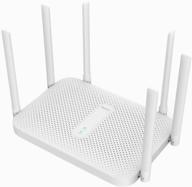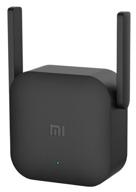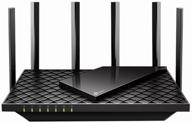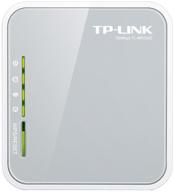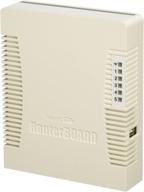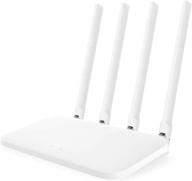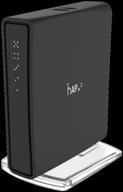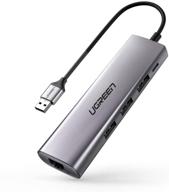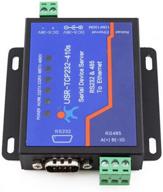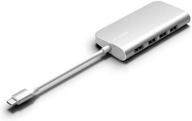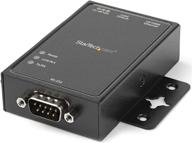- An excellent machine, 128 strokes of memory, stable operation, 10 ports (5 of them are gigabit), the display shows the necessary information and plus a level 5 license. For the money, it's worth it.
- Doesn't glitch, doesn't freeze. All oddities - from the wrong settings. The price is close to SOHO, the possibilities are reaching out to adult routers. I was surprised to learn that my Internet speed is 100Mbps, not 75 (Hello D-Link!). The Wi-Fi speed in the Galaxy SII has increased from 20 Mbps to 35-40 Mbps when you keep the device a couple of meters from the router, and up to 50 on laptops. Finally, I have a VPN server not on the computer, but on the router. Computers can also be turned off by waking them up remotely via Wake on LAN, if necessary. You can implement your own DynamicAmazon ate script for non-standard services, and who doesn’t want to take a steam bath, Mikrotik has its own version, however, the domain name will consist of the serial number of the router. You can realize almost any fantasy, if you are careful. This is a multifunctional combine, from which, however, you should not try to squeeze out all the exotic features that it is capable of. In particular, it is not recommended to get involved in MetaRouter - you can hang up a router (people even ran Asterisk on it for testing). Can be hung on the wall so that the screen faces the user. Metal body, neat appearance.
- The setup is a little more complicated than SOHO routers. You will have to learn how the dstnat, srcnat, input, output, forward chains work, what is mangle. For those who are familiar with iptables, as with their own, there will be no problems. Those who are not familiar, after some time, will suddenly master them by a living example. A good analogy is to compare a children's construction set, where parts are already fitted and holes drilled (SOHO), with work on living materials, where all the parts will have to be made independently, but the possibilities are wider. Only 5 gigabit ports. Working with 8022022n Wi-Fi is fraught with oddities that did not exist on 8022022g SOHO routers. We have to figure out why when the Galaxy SII falls asleep, then you have to turn off Wi-Fi and turn it on again, otherwise it won’t download. They say that this is allegedly due to the phone clock lagging behind the router clock during encryption. WiFi speed became dependent on the distance between the router and the mobile device, which was not so noticeable on the DIR-320 with its 8022022g. This router only has the 2.4GHz band, but for 10 extra bucks, that's not a big deal. Maybe later I'll buy a separate Ubiquiti access point. The built-in clock does not have a backup power supply. The time is ated via SNTP. Does not want to work via USB with APC Back UPS CS500, although it "sees" it. Micro USB, although the board has a footprint for a full-sized one. The power supply is not built-in (the rack version can be converted, but this one is not). Very bright blue power LED. The supout. Rif file generated by the support router contains sensitive data such as VPN passwords.
- - Learned a lot about routing and networks while setting up the router. - The list of tasks that the router can handle is long. As a programmer, I really like the ability to write various scripts to perform specific tasks. At the moment, the router balances two Internet channels (WAN), promptly reports that there is no Internet on one of them (run out of money or no link), acts as a VPN server, access point. One WAN 50Mbit, the second - 100Mbit. As a result, the total download speed of torrents is approximately 150Mbps. Of course, this is due to the large number of threads. A single connection cannot be parallelized. - Very stable. Reboot only because of my settings change. - The processor can be overclocked by regular means. - Relatively popular, large community, lots of information online. - Regular firmware ates. - Looks solid. - Powerful Wi-Fi transmitter (we read the legislation). - One environment for all routers. - +100 coolness.
- The maximum speed for routing is about 300 Mbps. The more rules in the firewall, the slower.
- The best SOHO router in its class. Flexibility of customization, screwing all possible goodies through metarouter, Hot-Spot + Web Proxy = pretty funny solution for housemates.
- Creepy "Blue Eye", infuriates, (corrected with black electrical tape) Mini-USB socket, - was full USB weak? When WEB Proxy is enabled, it consumes a lot of.
- Very cool piece of iron. There are a lot of them
- No
- Lots of ports, ease of use
- Stopped working after 2 months
- Ability to customize any Wishlist. Full control of all connected devices. Work stability. Powered by PoE. My router is connected to a power outlet, but the access point, also by the way, MikroTik is connected to port 10 and is powered by the router. Which is very convenient.
- If you are not an expert in setting up Mikrotik routers and you have no desire to figure it out. Take Keenetic for example. It will take 5 minutes to set up. Price. For this money, you can take a router not only with gigabit ports, but also with dual-band Wi-Fi. But the quality of workmanship and capabilities cover this shortcoming.
- 1. The widest possibilities 2. Price! 3. Long Range WiFi 4. A bunch of different inputs / outputs 5. Pleasant appearance with a touch screen that can display various information or graphics, but if it interferes, you can simply turn it off 6. Build Quality 7. Stability of work (a year has passed since the purchase and it has never turned off or rebooted, it works 24/7)
- If you do not understand what protocols are and how they function, how NAT and Firewall work, then you cannot configure this router or it will be used by 5% - but this is not a drawback, it is rather a warning to those who are chasing the power of their router without understanding why is it for him
- Power, functionality, stability. Doesn't cut speed.
- Not detected
- 1. Price (at the moment for such a professional piece of iron 7000 is not money) 2. USB (most likely, the developers heard the requests, and I got a model with a normal standard USB port, and not, as it was before, a micro-usb and an adapter to it) 3. Physical ports (there is an SFP socket for optics, from the 1st to the 5th they are gigabit, the first port is used for PoE-In, you can power the router itself, from the 6th to the 10th they are 100mb / s, the tenth port is used for PoE out, you can power something , I have a Ubiquiti UniFi AP powered at work, you can use an IP camera for example) 4. Flexible settings (the same Winbox to help) 5. Stable operation (24/7, as they say, set it up and forget it, in principle, this applies to all Mikrotiks) 6. Metal case (not as flimsy as plastic) 7. License (5th level, gives the right to connect up to 500 devices at the same time, and I'm sure it will keep them stable and without glitches)
- 1. Packaging (I’m already used to it, opening it you always know that what’s inside will not let you down, but it’s still not presentable, cheap and scarce, there are no screws for mounting on the wall, no instructions) 2. Pinout (an incomprehensible thing for me, a router on legs, well, logically, it should look at you "face", but then what for the ports are in front of it, the router is not intended for mounting in a server rack, there are no mounts to it, at least in they definitely don’t have a complete set, it would be more logical to make all these giblets from behind, and only display an indication on the face and a USB port) 3. Non-removable antennas (well, these are nitpicks, in general, most Mikrotiks have antennas built into the inside, they could implement it this way, and even if the router increased a little in size, it’s not scary at all) 4. Screen (why I really need it so much, I can’t fit it, it helps a lot in monitoring, but who will be staring at it, secondly, it affects the price of the device itself, in general, I think it’s just a rudimentary organ of the device) 5. Adapter (raises doubts about its reliability) 6. Eye-burning blue diode (the expression is not mine, but I completely agree with it) 7. There is no network at 5GHz (USB means they replaced it with a standard one, that is, they were able to upgrade it, and what prevents adding 5GHz to it is very important nowadays)
- Very great opportunity, price.
- Manufacturing quality. The plug on the power supply (the one that is inserted into 220V) is made crooked and the pads protrude significantly beyond the plastic "legs" on which they are located. As a result, the PSU is easy to insert into the socket, but pulling it out . you have to suffer. For some reason, the plug from the PSU does not fit into the hole in the case and, accordingly, cannot be fully inserted into the power connector on the board. As a result, one careless movement and. the router is de-energized!. A very bright and useless blue LED sticks out on the "muzzle", and a sticker of the front part of the router is pasted directly on top of it, and the diode is not isolated from the sides, so it shines in ALL directions! Color screen quality for 2022 Terrible, it would be better if there was a monochrome display. Under a good load, it seems to start to overheat and fail - all ports fall off and the device becomes inaccessible. There were problems in the implementation of IPSEC.
- Iron body. The assembly is of high quality, it is not so flimsy, unlike d-links and tupalinks Long-range sho pipets. This is achieved by the transmitter settings, you can turn it to the maximum and it will siphon two floors up and down. This is both a plus and a minus at the same time. You can set up either everything, or almost everything, the main thing is not to get carried away.
- Stuffy setting. Moreover, it is not the same for the web interface and for a special utility. A very powerful transmitter, I'm not sure that others will be delighted with this. Completely useless LCD. Better without it, it will be cheaper;) Only a specialist can tune it, and for some reason only after dancing with a tambourine. There is not enough of a wizard thread so that you can get it out of the box, pick up the provider and follow the instructions to configure
- Port combination 5 nut, 5 normal, LCD display, stable, flexible setting.
- not found yet
- Professional piece of iron at the price of a good home router. Incredibly flexible customization. Until now, it regularly receives OS ates - an ate with Amazon over HTTPS has recently arrived, which cannot but rejoice. Pretty simple setup for "basic" things. Very nimble, despite the relatively weak iron — the speed is not lost. Lots of Ethernet ports - this is important for me, because. there are a lot of computers connected via cable, and you don’t want to use switches anymore. The metal case is very well made, unlike "home" routers. Looks very stylish.
- The piece of iron is old, so Wi-Fi is only 2.4 GHz. But here it’s like someone, for me it’s not a minus, but rather a plus - 2.4 beats further, I get a confident reception in the yard (private house). Once it refused to boot until I pulled out all the wires, including the power supply (I didn’t react to reset either, neither by pressing nor by holding). It was not possible to start it with the YOTA modem. There is a live interface, but there is no routing to any.
- everything can be customized!
- buggy wifi
- The equipment provides great customization options and is therefore very flexible. For enthusiasts or professionals.
- Burned out within a year. Hard to set up for non-IT people.
- Does not act up, does not cut speed, does not fall off Wi-Fi.
- The price and complexity of changing antennas (putting external ones).
- Rugged design
- Can cause injury






